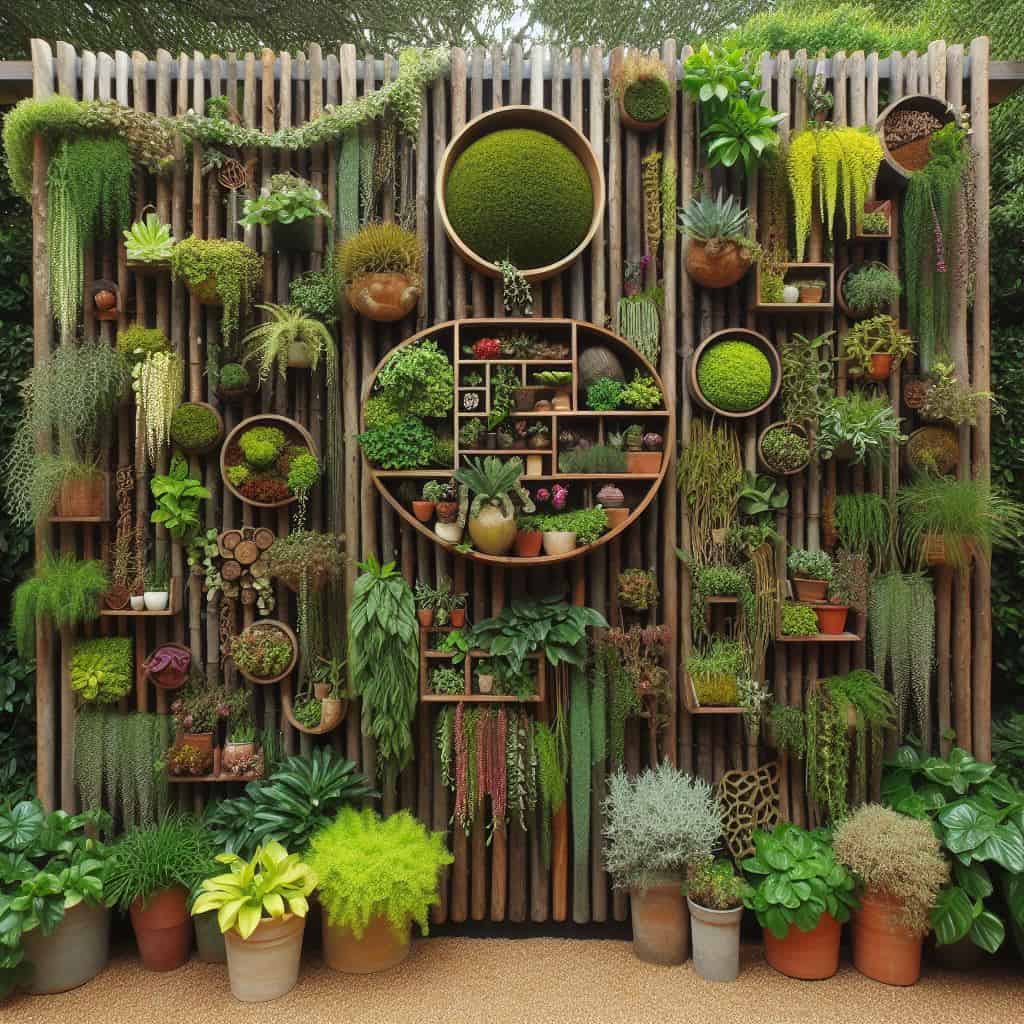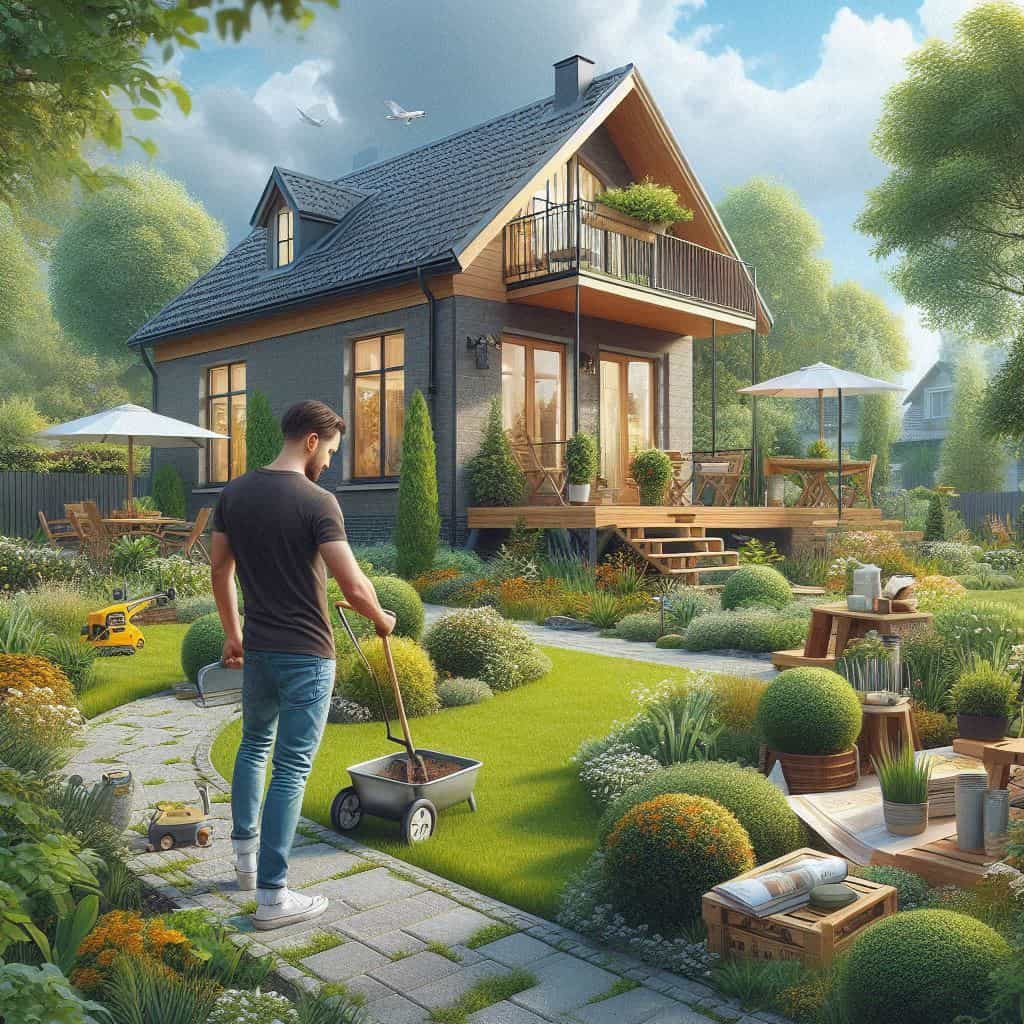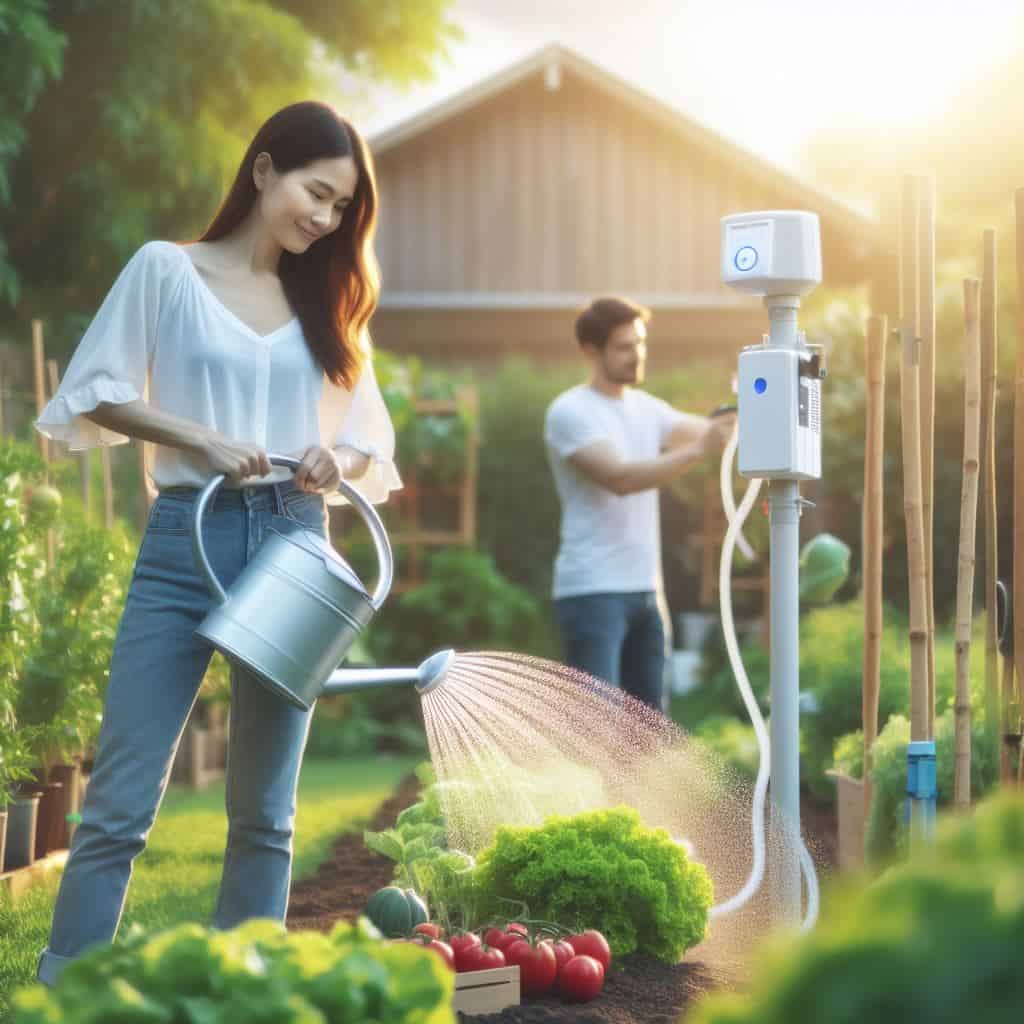Vertical gardens are becoming increasingly popular in modern landscape design due to their beauty and uniqueness. They allow you to create green oases even in limited spaces such as balconies, terraces, or small plots. Creating a vertical garden is an engaging and creative process that can transform an ordinary wall or fence into a picturesque botanical canvas. Let us explore some ideas for creating vertical plant compositions on walls or fences.
Vertical panels
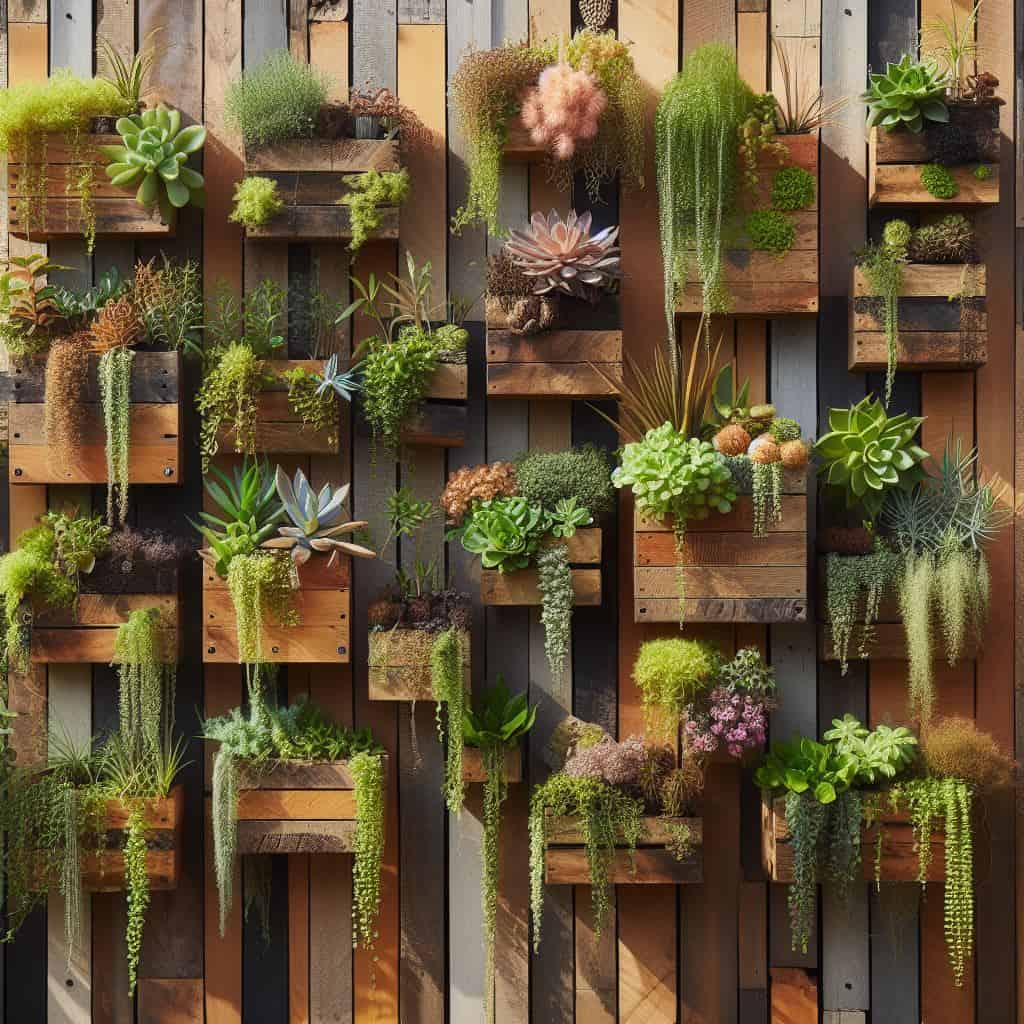
Vertical panels for vertical gardens are special structures that can be installed on a wall or fence to create vertical greening. They can be made of various materials such as metal, wood, plastic, or textile and are designed to hold planting material – plants.
Types of vertical panels
- Metal panels: made of durable metal, such as aluminum or steel. They usually have holes or pockets for planting. They can have a modern and stylish look.
- Wooden panels: made of natural wood and typically have a warm and natural look. They can be used as a base for a vertical garden or as a decorative element.
- Plastic panels: lightweight and durable, plastic panels can come in various shapes and colors. They are resistant to moisture and easy to clean, making them convenient for use in the garden. They can also mimic wood and cost significantly less.
- Textile panels: made of fabric or non-woven material. They provide good ventilation and retain moisture, which promotes healthy plant growth.
Vertical panels are an excellent way to add greenery and beauty to your garden or balcony, especially if you have limited space. They can be used as a standalone design element or in combination with other landscaping elements to create a unique and beautiful green space.
Vertical pots and boxes
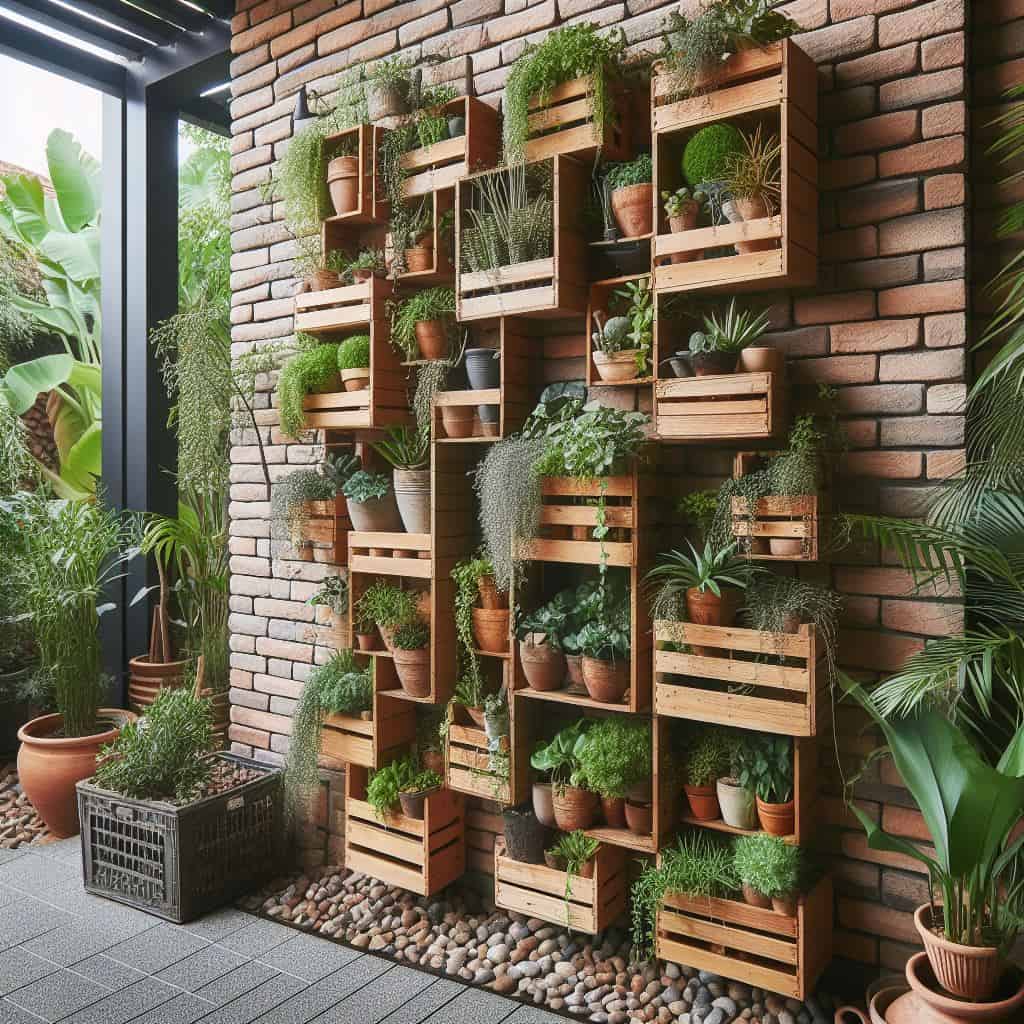
Vertical pots and boxes are another popular way to create a vertical garden. They allow you to place plants along a wall or fence, saving space while creating an interesting and beautiful design. Here's more about vertical pots and boxes:
Types of vertical pots and boxes
- Wall-mounted pots: These are pots that can be mounted on a wall or fence using special hooks or holders. They usually have drainage holes and can be made of various materials such as plastic, ceramic, or metal.
- Hanging pots: These are pots that are suspended from the top and can create a cascading effect, especially when multiple pots of different sizes are used. They can be made of various materials, including plastic, ceramic, textile, or metal.
- Mounted boxes: These are boxes or crates that can be mounted on a wall or fence and used for planting. They can be made of wood, plastic, or metal and can come in various sizes and shapes.
- Vertical pots and boxes are great for creating a beautiful and functional vertical garden. They help save space while creating a cozy and green atmosphere in any area.
Hanging pots

Hanging pots are a unique way to create a vertical garden or decorate a space. They allow you to hang plants from the ceiling, balcony, veranda, or other suitable locations, freeing up valuable floor space. Here is more about hanging pots:
Types of hanging pots
- Classic hanging pots: these are regular pots with drainage holes at the bottom and hangers for suspension. They can be made of various materials such as ceramic, plastic, metal, or wood, and come in different sizes and shapes.
- Macramé hangers: these are decorative rope or textile hangers used for suspending pots. They can have different patterns and lengths, allowing you to create interesting compositions.
- Hanging baskets: these are baskets or containers, usually made of plastic or metal, with drainage holes and hangers for suspension. They can be used for planting flowers or greenery.
Hanging pots are a great way to add greenery and beauty to your home or garden, especially if you have limited space. They create a cozy and picturesque atmosphere and can be a bright accent in your interior or exterior.
Choosing plants for a vertical garden
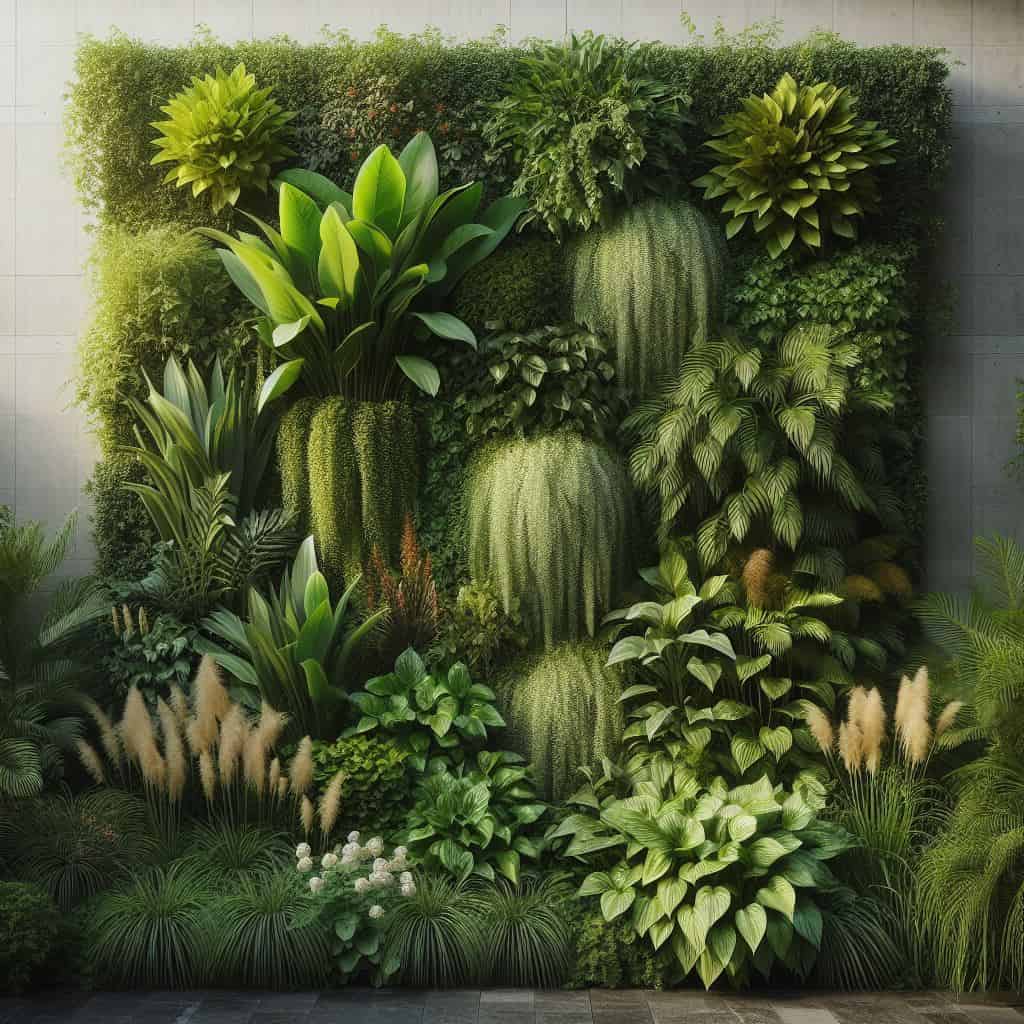
Plants with lush foliage are excellent choices for creating beautiful and green vertical gardens. They have dense and abundant foliage, which creates a dense and picturesque plant cover. Here are some of the most popular lush foliage plants for vertical gardens:
- Ferns - these are beautiful plants with graceful foliage that creates an atmosphere of freshness and lightness. Ferns are great for creating textured compositions in vertical gardens.
- Ivy - this fast-growing plant has dense green foliage. Ivy can be used as a ground cover for vertical surfaces, creating a dense green cover.
- Ficus - this plant has beautiful large leaves. Ficus looks great in vertical gardens due to its lush foliage and variety of varieties.
- Monstera - this plant has large, perforated leaves. Monstera creates an impressive look in vertical gardens and requires minimal care.
- Begonia - this plant has beautiful and diverse foliage. Begonias can add bright color accents to a vertical garden thanks to their bright foliage.
The main features of lush foliage plants for vertical gardens include:
- Fast growth: many lush foliage plants grow quickly, allowing you to create a dense green cover in a short time.
- Shade and moisture: many of them prefer shade or partial shade and regular watering, making them suitable for vertical gardens that are in the shade or receive limited sunlight.
- Decorativeness: plants with lush foliage have decorative leaves, making them attractive for use in vertical garden design.
When choosing lush foliage plants for a vertical garden, pay attention to their lighting, humidity, and care requirements to create a beautiful and healthy plant corner.
Tips and care for your vertical garden
- Play with colors: Do not be afraid to experiment with plant colors. Create contrasting or harmonious combinations to add interest and vibrancy to your vertical garden. A variety of colors and shades will help create a unique and memorable design.
- Seasonal compositions: change compositions according to the season to keep your vertical garden looking fresh and interesting. Use flowering plants in spring and summer, and turn to plants with beautiful foliage or berries in autumn and winter.
- Care for your vertical garden: do not forget about proper care for your vertical garden. Regularly water the plants, remove faded flowers, and prune excess shoots. Also, monitor the condition of the soil and fertilize the plants as needed.
Creating a vertical garden is an exciting and creative activity that allows you to transform ordinary space into a true oasis of greenery and beauty. By following our ideas and advice, you will be able to create a unique vertical garden that will delight you and your guests with its beauty and freshness for many years.
